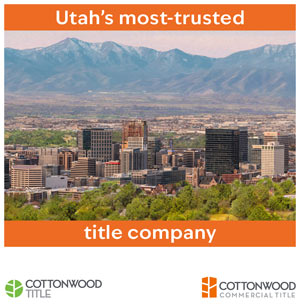Carlos Braceras, executive director of the Utah Department of Transportation, recently told the Governor’s Office of Economic Development (GOED) board that Utah is uniquely positioned to be among states where companies can try out automated vehicle technology.
Utah’s top transportation official wants to steer the state toward attracting companies conducting driverless-technology tests.
Carlos Braceras, executive director of the Utah Department of Transportation, recently told the Governor’s Office of Economic Development (GOED) board that Utah is uniquely positioned to be among states where companies can try out automated vehicle technology.
Michigan, California, Texas and Florida are currently sites for such testing, and Nevada “is pushing in really hard as well,” Braceras said at the board’s February meeting.
“Between our growing high-technology center, between our universities here, and between what I believe are the advantages we have with our transportation infrastructure, Utah presents a unique opportunity to attract these companies — to make Utah the place where companies want to come to test, develop and hopefully become the hotbed” of automotive tech development, he said.
The companies could take advantage of the state’s in-place system of sensors and fiber-optics to monitor traffic movement, using dedicated short-range communications (DSRC) radios — a technology that helps vehicles detect one another.
“We could, in a matter of weeks, stick some of those DSRC radios into every one of our traffic cabinets, so if you were able to bring a technology company in here that wants to test autonomous vehicles and have them communicate with every traffic signal so they could time themselves to never hit that signal and create crash-less intersections, we are the best state in the country for that to happen,” Braceras said. “This is a real opportunity.”
He said he is considering sending out a request for proposals to alert companies about the opportunities in the state.
“I want Utah to be the place where this technology is developed and people to know to come here to make it happen,” he said. “This is Utah’s advantage: the signal system and the fiber-optic system that we have dedicated to transportation statewide. Eighty percent of every traffic signal in the state of Utah is all tied together in our fiber-optic system.”
Utah already has gotten a taste of such testing. Peloton Technology, a California company, used a West Desert to road test technology that allowed a pair of tractor-trailers to save an average of 12 percent on fuel usage. Software allowed one truck to follow another closer than normal, capitalizing on the “drafting” concept used by bicyclists and racecar drivers.
Google is developing self-driving cars that already have driven 1.5 million miles on public roads, Braceras said. Google’s website said the vehicles — modified Lexus SUVs and some prototype vehicles — have been “out on the streets” of Mountain View, California; Austin, Texas; and Kirkland, Washington.
Meanwhile, Tesla Motors’ Model S contains an autopilot that allows it to steer within a lane, change lanes with the tap of a turn signal, and manage speed by using active, traffic-aware cruise control, the company says.
“Digital control of motors, brakes and steering helps avoid collisions from the front and sides, as well as preventing the car from wandering off the road,” according to the Tesla website. “Model S can also scan for a parking space, alert you when one is available, and parallel park on command.”
Braceras said Google expects to sell automated vehicles by 2020 and that Tesla wants its version available to the public in the next two years.
The GOED board saw a video envisioning the future of auto transportation. In the video, a person entered a vehicle and provided a destination, then the vehicle traveled to it as the occupant checked emails, made and changed appointments and did other activities.
“The change that’s taking place today — and it’s going to be taking place over the next four to 10 years — is as significant as the change was going from a horse-and-buggy to a car,” Braceras said. “I’m serious about this. In differential calculus, this would be a deflection point. That’s the point in which the curve is changing shape, and we’re absolutely starting to steepen the curve and accelerate the change that we’re seeing in transportation today.”
The auto industry has changed little over the past 50 years, even with new vehicle models being unveiled annually, he said. By comparison, smartphones have changed significantly with new software developments.
“The rate of change in automobiles, in transportation, is going to start to mirror the rate of change that we experience today with our phones and our computers, and that change is coming at us in such a way that I believe we need to be ready,” he said.
Braceras said automated vehicle and other technologies will help Utah and the nation accomplish their transportation goals. In Utah, they include having zero crashes, injuries and fatalities; optimizing mobility; and preserving infrastructure.
“When we have technology driving these cars, we’re going to be able to put cars tip to tail at higher speeds,” he said. “Think about the disruption that’s caused when you see these people jumping lanes and changing lanes. We’re going to be able to increase our capacities tremendously with this.”
He also envisions a time when potential potholes can be detected and fixed before they become reality, and using 3D-printer technology can make bridges. Already, a steel pedestrian bridge is being built in Amsterdam using printer technology.
Read more:The Enterprise - UDOT Utah ideal location for automated vehicle tech tests





